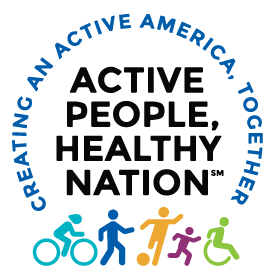Key points
- It is safe for healthy pregnant and postpartum women (first year after delivery) to do moderate-intensity physical activity.
- Physical activity has many health benefits throughout pregnancy and after birth.

Recommendations
Moderate-intensity physical activity is safe for you during pregnancy if you are generally healthy. It can help reduce your risk of excessive weight gain and gestational diabetes and keep your heart and lungs healthy.
During the postpartum period (first year after delivery), physical activity can decrease symptoms of postpartum depression. When combined with healthy eating, it can also help you with weight loss after delivery. Find your way to move during and after pregnancy.
Download Physical Activity Recommendations for Pregnant and Postpartum Women.
Physical Activity Recommendation

Get at least 150 minutes (for example, 30 minutes 5 days a week) of moderate-intensity aerobic activity a week during pregnancy and the postpartum period. Remember, some physical activity is better than none, so do what you can.
Benefits

- Reduces the risk of excessive weight gain during pregnancy.
- Reduces the risk of gestational diabetes during pregnancy.
- Reduces symptoms of postpartum depression.
Examples of Physical Activity

- Brisk walking.
- Some forms of yoga.
- Water aerobics.
- Bike riding.
*After the first trimester, try to avoid activities that require lying flat on your back.
Talk to your doctor

Frequently asked questions
Yes! If you are a healthy pregnant or postpartum woman, physical activity is good for your overall health. For example, moderate-intensity physical activity, such as brisk walking, keeps your heart and lungs healthy during and after pregnancy. Physical activity also helps improve your mood throughout pregnancy and after birth. After you have your baby, exercise also helps maintain a healthy weight, and when combined with healthy eating, it helps with weight loss.
Yes! You don’t have to do it all at once. Aim for 150 minutes of aerobic physical activity a week, but you can break it up into smaller chunks of time (for example, 30 minutes 5 days a week). As long as your aerobic physical activity is a moderate or vigorous effort, any amount of time counts toward meeting the aerobic guideline.
According to scientific evidence, the risks of moderate-intensity aerobic activity, such as brisk walking, are very low for healthy pregnant women. Physical activity does not increase your chances of low birth weight, early delivery, or early pregnancy loss.
Unless you have a medical reason to avoid physical activity during or after your pregnancy, you can begin or continue moderate-intensity aerobic physical activity.
See more information on moderate- and vigorous-intensity aerobic physical activity.
Did you know?
Women who already do vigorous-intensity aerobic physical activity, such as running, can continue doing so during and after their pregnancy. This is according to the Physical Activity Guidelines for Americans, 2nd edition.

Want additional tips and resources to be active?
Learn about Active People, Healthy NationSM, CDC’s national initiative to help people be more physically active.
- Physical Activity Guidelines for Americans, 2nd ed. US Department of Health and Human Services; 2018:79–80.
